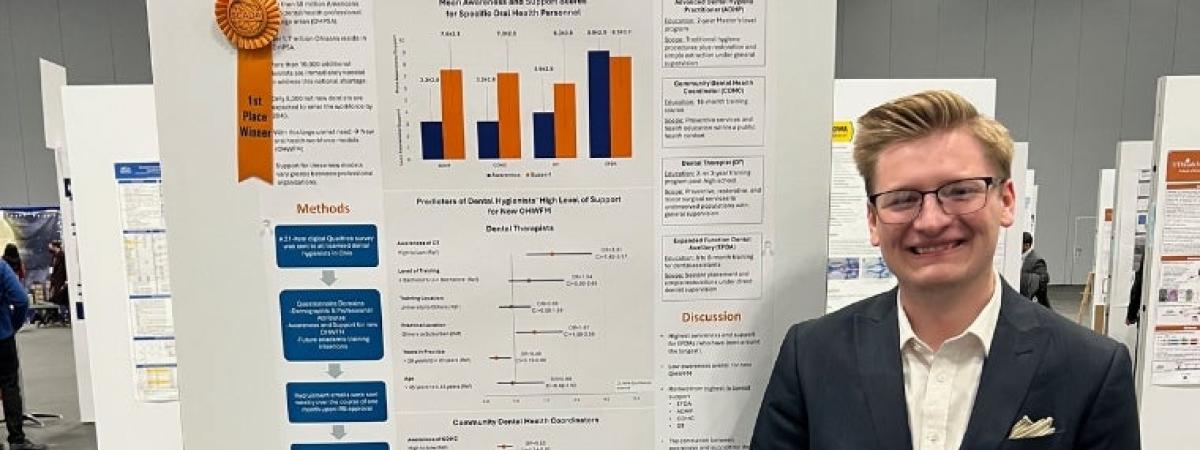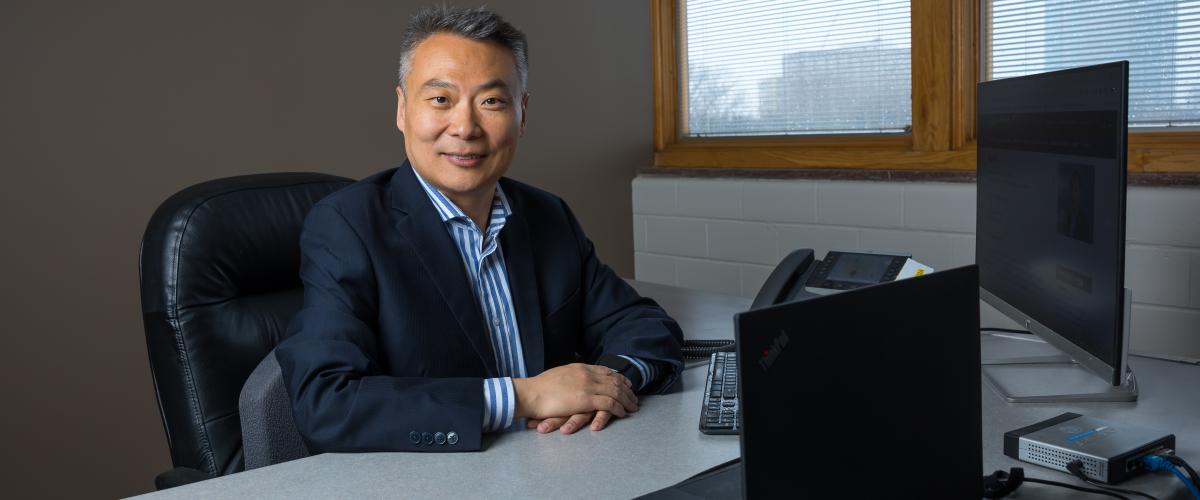Alex Matthews
DMD/MPH dual-degree student at the School of Dental Medicine
Area of Focus: dental public health, focusing on care access
Alex Matthews grew curious about public health before he knew the term. As a kid in rural Tennessee, the multi-hour trips required to see various healthcare providers made him wonder why there weren't any local options for his community, where many struggled to access services for financial, geographic and other reasons.
Later drawn to dentistry and its ability to develop long-term patient relationships, Matthews now studies dental public health as an DMD/MPH dual-degree student at the Case Western Reserve University School of Dental Medicine.
Because oral health is inextricably linked with systemic health, both must be addressed to ensure patients stay healthy, he said.
Many barriers to dental care—such as lack of providers and inaccessible transportation—must be resolved at the systemic level, rather than the individual. Matthews’ research explores these barriers to recognize and remove them, "so all individuals can receive equitable and accessible care," he said.
He’s earned top honors for multiple research projects. He became the first-ever CWRU student to win first place in the Student Competition for the Advancement of Dental Research and its Application (SCADA) at the American Association for Dental, Oral and Craniofacial Research’s Annual Meeting. His project, “Dental Hygienists’ Awareness and Support for Emerging Oral Health Personnel,” examined the dentist provider shortage through perspectives about mid-level providers.
In April, Matthews earned first place in the Student Oral Presentation competition at the 2025 Ohio Public Health Conference for another project: “Ohio Pediatric Dentists’ Perspectives on Access to Dental Care for Children and Youth with Special Healthcare Needs (CYSHCN)”.
This population—categorized as children with a chronic disease that results in higher use of healthcare services—has increased dental needs but fewer options for receiving care, as many general dentists choose not to treat this population.
The research identified a perceived lack of adequate training as a primary reason for not treating this population, alongside concerns about inadequate equipment and increased time needed to deliver care. The results indicate a need for enhanced CYSHCN training at the predoctoral and professional levels, as well as a coordinated pathway to guide CYSHCN to willing general dentists, Matthews said.
His research was conducted under the mentorship of Sena Narendran, a longtime faculty member of the dental school and director of the DMD/MPH Program.
Upon graduation, Matthews plans to attend a pediatric dental residency program, where he can continue dental public health research and outreach.
"Far too often, dentists forget that we treat people, not teeth, and that people are shaped by their community and the world,” he said.





